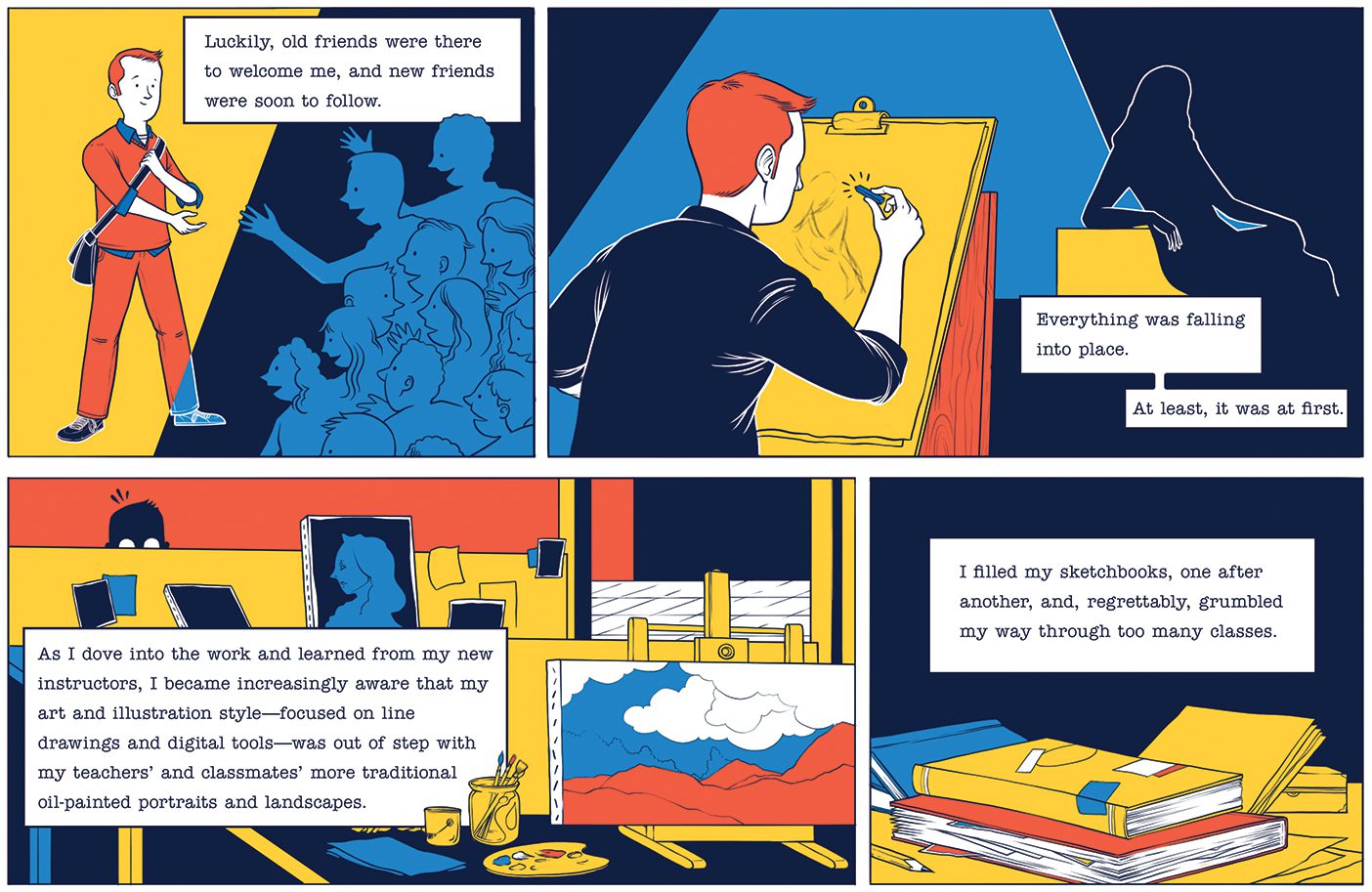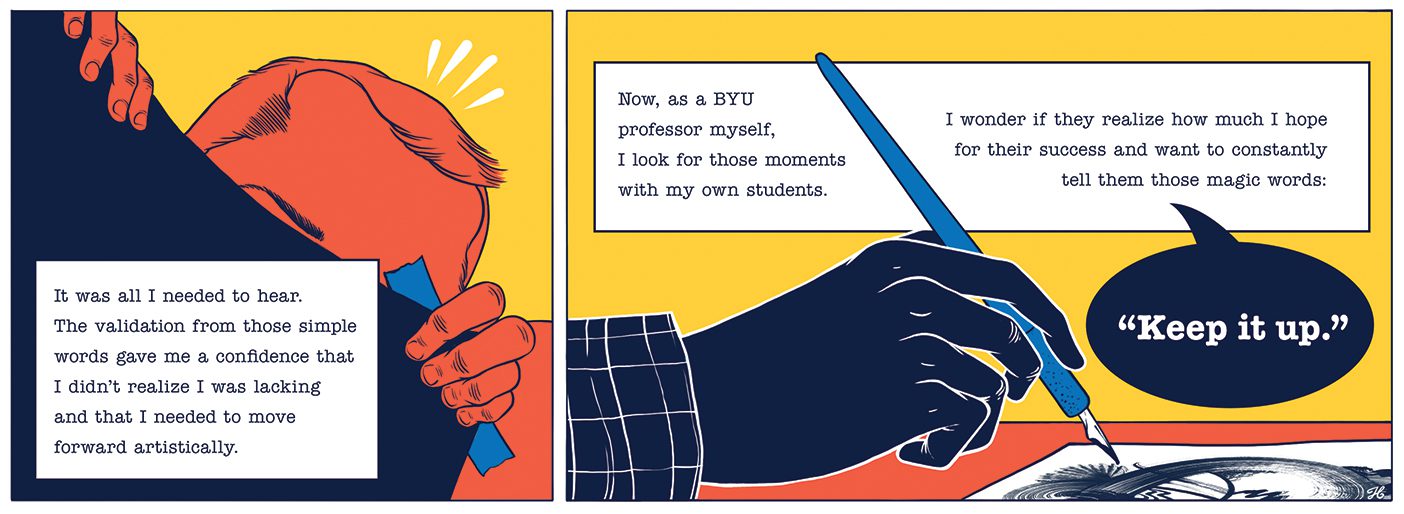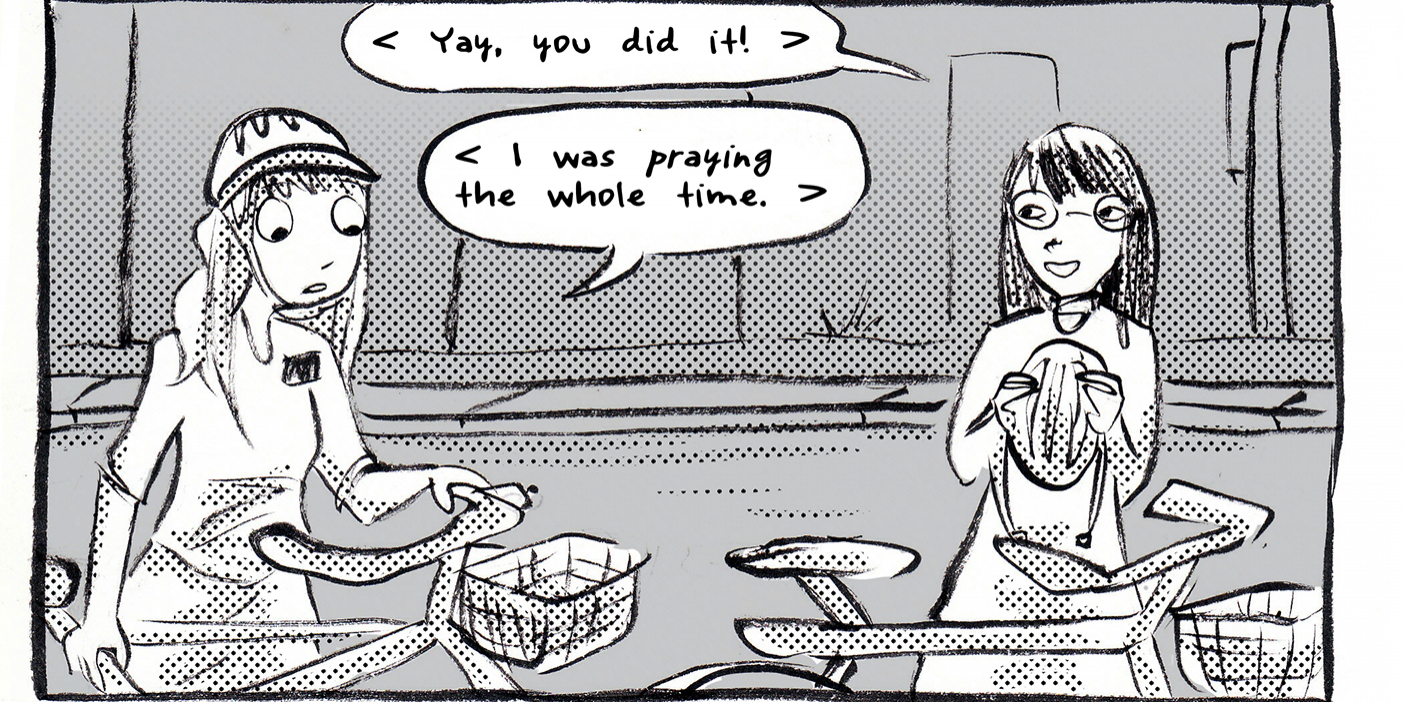



A World Worth Exploring
All along his artistic journey, David M. Habben (BFA ’06), a BYU assistant professor of design, has been trying new things—new media, new subjects, and new styles. His work ranges from simple line art to funky digital drawings to abstract compositions mimicking dance to children’s book art (he wrote and illustrated, Mr. Sherman’s Cloud, published in March).
Amid all that variety, he says his message is consistent: “There is a world of ideas and experiences around each of us and inside us that is worth exploring.”
Throughout 2019 BYU Magazine will share campus stories through the drawings of artistic alumni. Want to pitch your own BYU memory? Send your concept to magazine@byu.edu.











